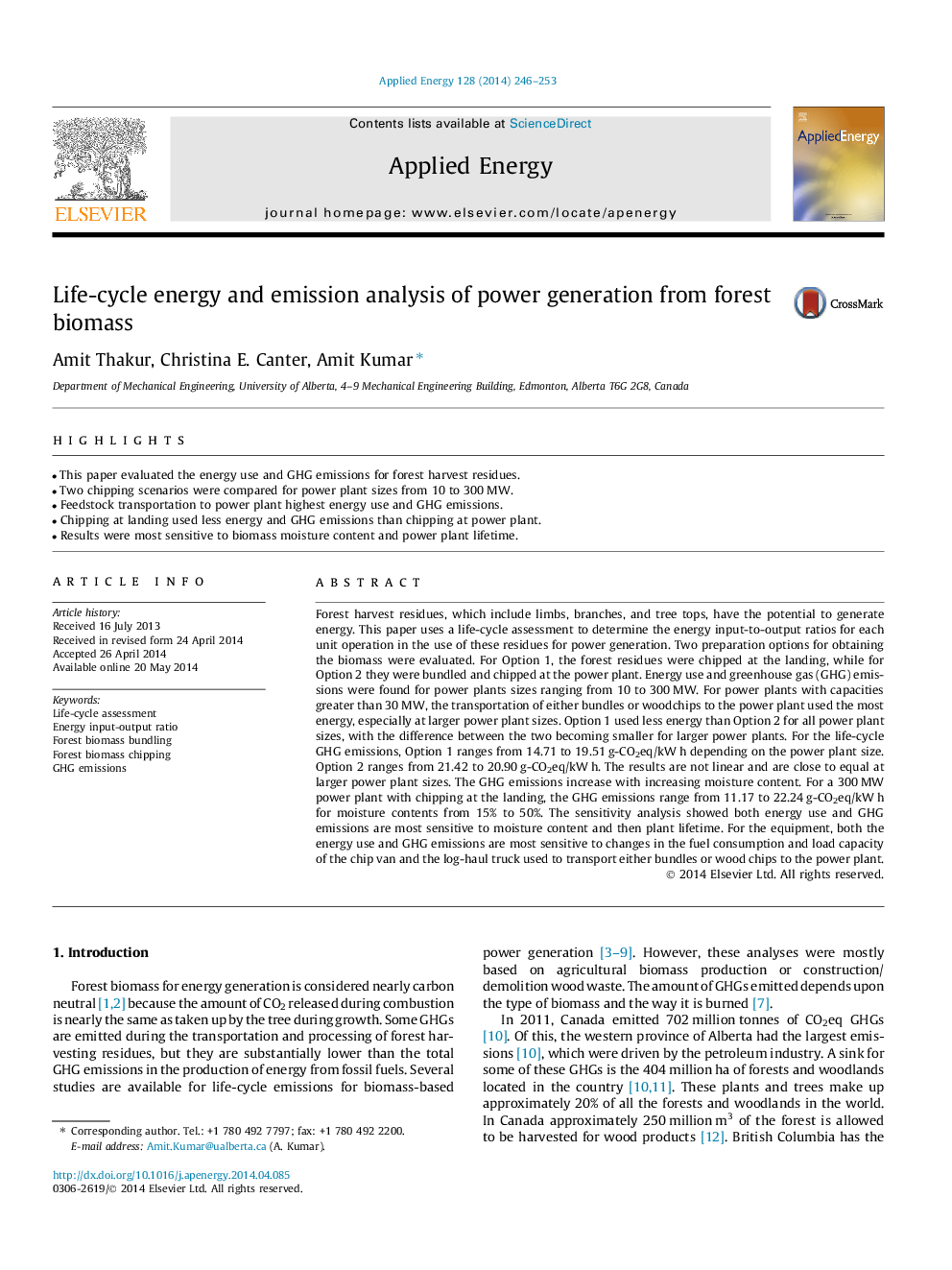| کد مقاله | کد نشریه | سال انتشار | مقاله انگلیسی | نسخه تمام متن |
|---|---|---|---|---|
| 242681 | 501896 | 2014 | 8 صفحه PDF | دانلود رایگان |
• This paper evaluated the energy use and GHG emissions for forest harvest residues.
• Two chipping scenarios were compared for power plant sizes from 10 to 300 MW.
• Feedstock transportation to power plant highest energy use and GHG emissions.
• Chipping at landing used less energy and GHG emissions than chipping at power plant.
• Results were most sensitive to biomass moisture content and power plant lifetime.
Forest harvest residues, which include limbs, branches, and tree tops, have the potential to generate energy. This paper uses a life-cycle assessment to determine the energy input-to-output ratios for each unit operation in the use of these residues for power generation. Two preparation options for obtaining the biomass were evaluated. For Option 1, the forest residues were chipped at the landing, while for Option 2 they were bundled and chipped at the power plant. Energy use and greenhouse gas (GHG) emissions were found for power plants sizes ranging from 10 to 300 MW. For power plants with capacities greater than 30 MW, the transportation of either bundles or woodchips to the power plant used the most energy, especially at larger power plant sizes. Option 1 used less energy than Option 2 for all power plant sizes, with the difference between the two becoming smaller for larger power plants. For the life-cycle GHG emissions, Option 1 ranges from 14.71 to 19.51 g-CO2eq/kW h depending on the power plant size. Option 2 ranges from 21.42 to 20.90 g-CO2eq/kW h. The results are not linear and are close to equal at larger power plant sizes. The GHG emissions increase with increasing moisture content. For a 300 MW power plant with chipping at the landing, the GHG emissions range from 11.17 to 22.24 g-CO2eq/kW h for moisture contents from 15% to 50%. The sensitivity analysis showed both energy use and GHG emissions are most sensitive to moisture content and then plant lifetime. For the equipment, both the energy use and GHG emissions are most sensitive to changes in the fuel consumption and load capacity of the chip van and the log-haul truck used to transport either bundles or wood chips to the power plant.
Journal: Applied Energy - Volume 128, 1 September 2014, Pages 246–253
